

Damion Smy
Nissan Juke EV will use Leaf platform, due in 2026 - report
13 Hours Ago
They'll probably never be cross-shopped, but we wanted to see how much extra bang the Audi RS6 buys you for your buck over the S6.

Founder
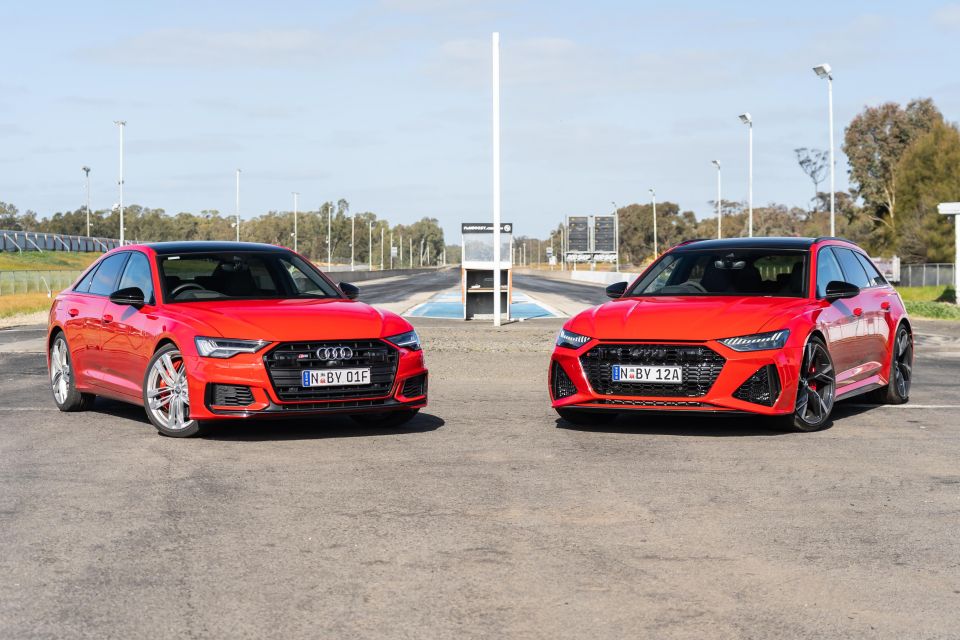

Founder
We’ve always been massive fans of the Audi RS6 Avant. The latest generation takes things to the next level on the technology front, with a 48V mild-hybrid system crammed under the bonnet. It’s now cheaper too, with a starting price of $216,000 before on-road costs.
But could the Audi S6 sedan be a better option? It’s significantly cheaper, with an asking price just under $150,000 before on-roads, and the twin-turbo V6 mild-hybrid engine packs a decent punch.
The only way to figure out how big of a difference there is between these two is by doing a CarExpert Dragparison!
In our Dragparison video, we’ll do the following comparison tests
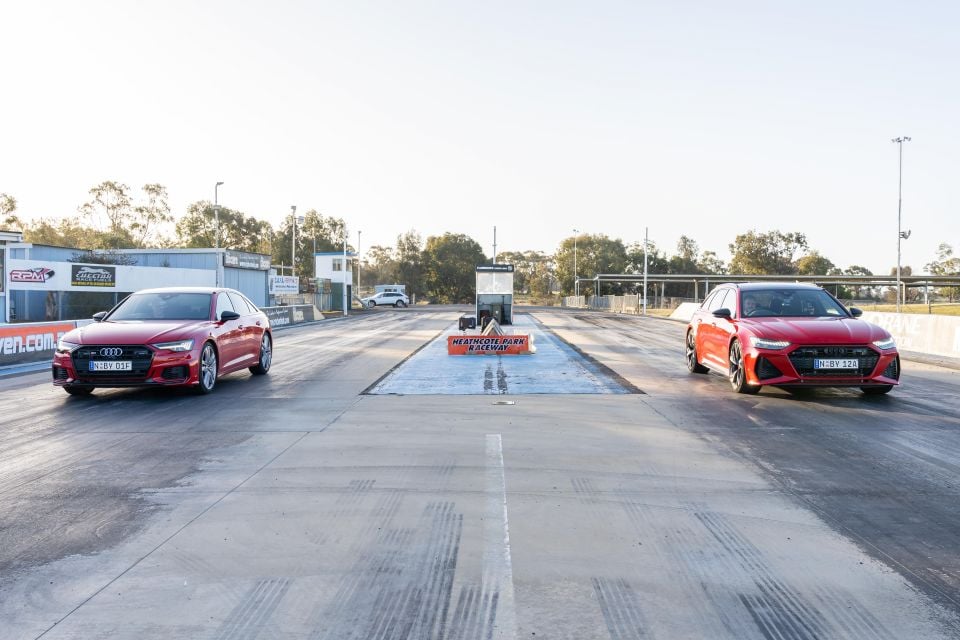
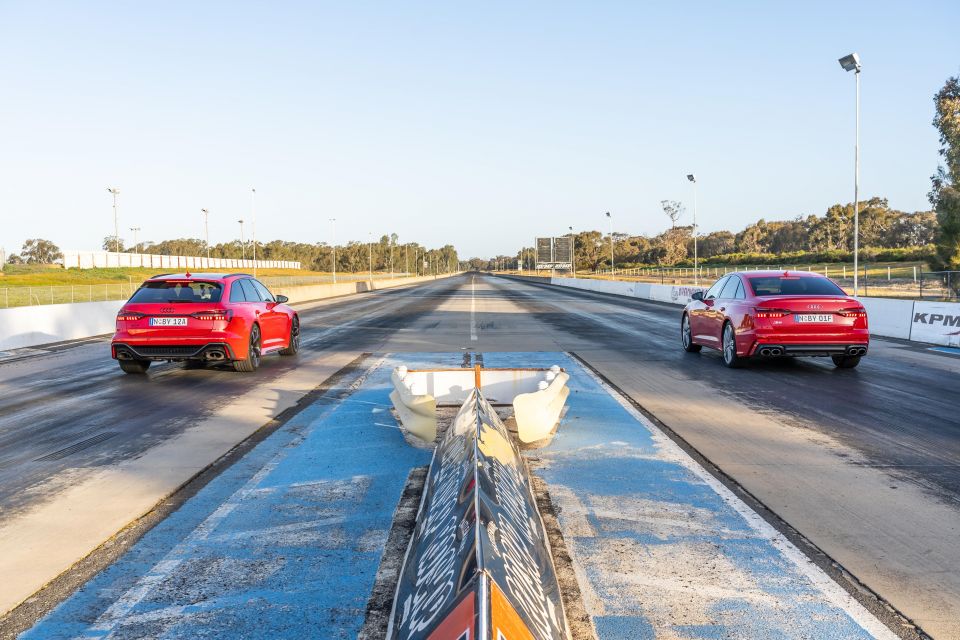
For clarity, in all our tests both cars were warmed up so the engines and components were at operating temperature.
The drag strip we used was unprepared, which means there’s extra wheel slip off the line that could effect performance figures. Finally, we don’t deduct the one-foot rollout – the numbers are recorded from the moment the car starts moving.
Audi has developed a fire-breathing twin-turbocharged V8 engine for the RS6 to complement the work that’s gone into the chassis.
The 4.0-litre twin-turbocharged V8 engine produces 441kW of power and 800Nm of torque. It’s 4kW down on the previous generation of RS6, but more importantly it has 100Nm more torque.
It’s mated to an eight-speed automatic torque converter transmission and sends torque to all four wheels. During regular driving it sends 40 per cent of torque to the front axle and 60 per cent to the rear.
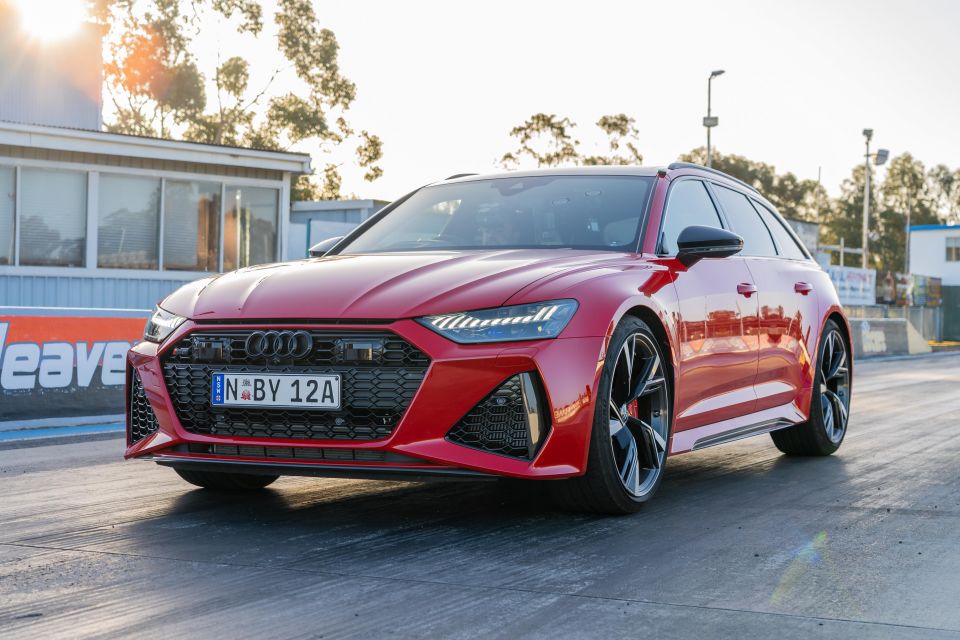
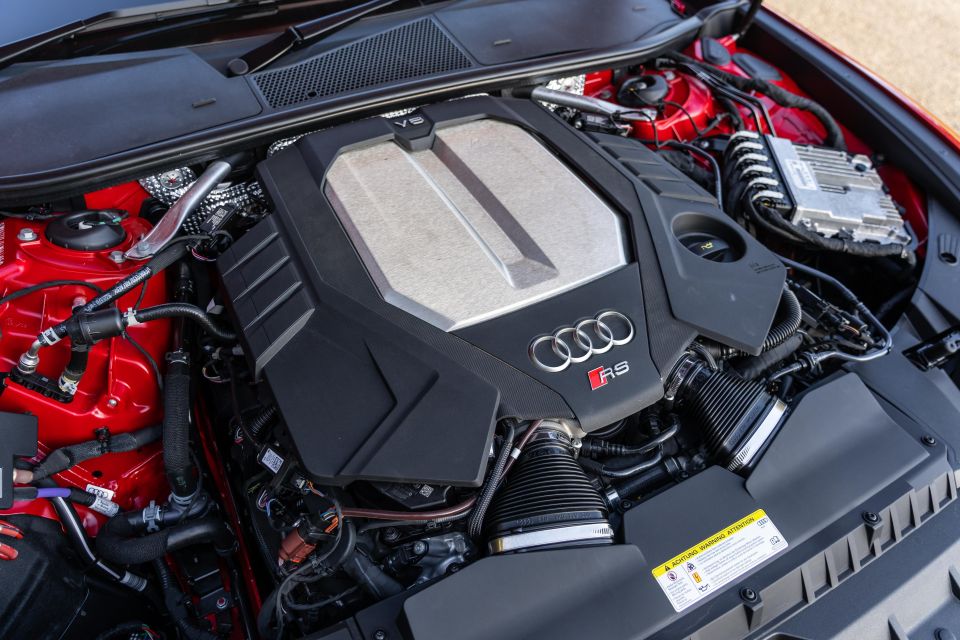
When required up to 70 per cent of torque can be directed to the front axle and up to 85 per cent to the rear – there’s no built in ‘drift mode’ like you’d find in the BMW M5 and Mercedes-AMG E63.
The drivetrain is coupled with a 48V mild hybrid system that can switch the car off between 55 and 160km/h, with the idle stop system activating from 22km/h while decelerating.
While coasting, the 48V system can utilise an on-board lithium ion battery to power the system’s safety and operating systems, meaning no fuel is required to keep the car coasting. Up to 12kW of energy can be recovered while coasting or during braking.
It’s a case of goodbye 4.0-litre V8, hello turbocharged and hybridised 2.9-litre V6. Losing cylinders is always sad, but there’s no questioning the numbers on offer.
Peak power is 331kW, peak torque is 600Nm. The former is on offer at 6700rpm, the latter hangs around between 1900 and 5000rpm. The upshot is performance essentially all the time, although we’ll dive into that properly very soon.
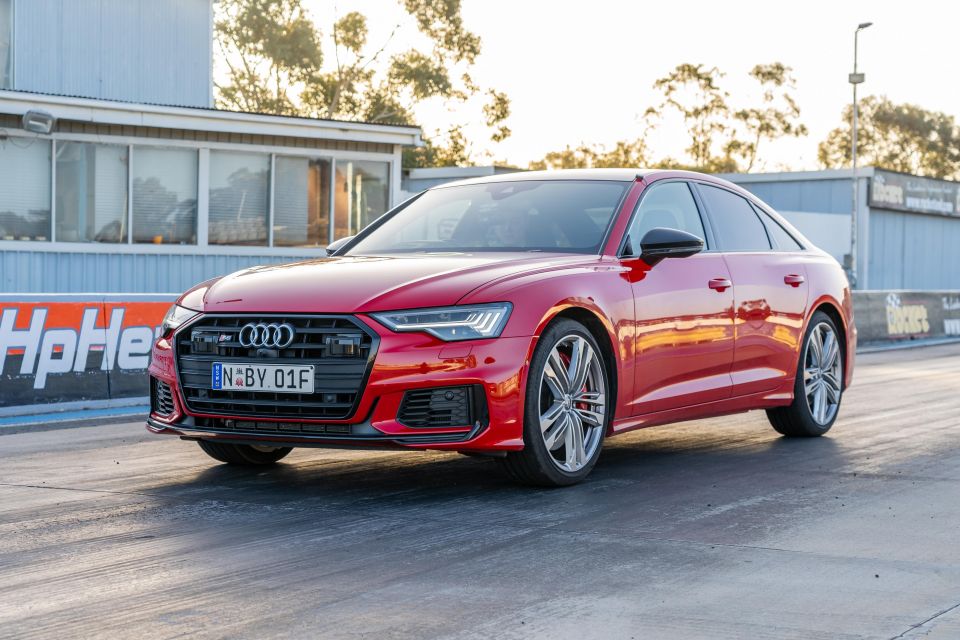
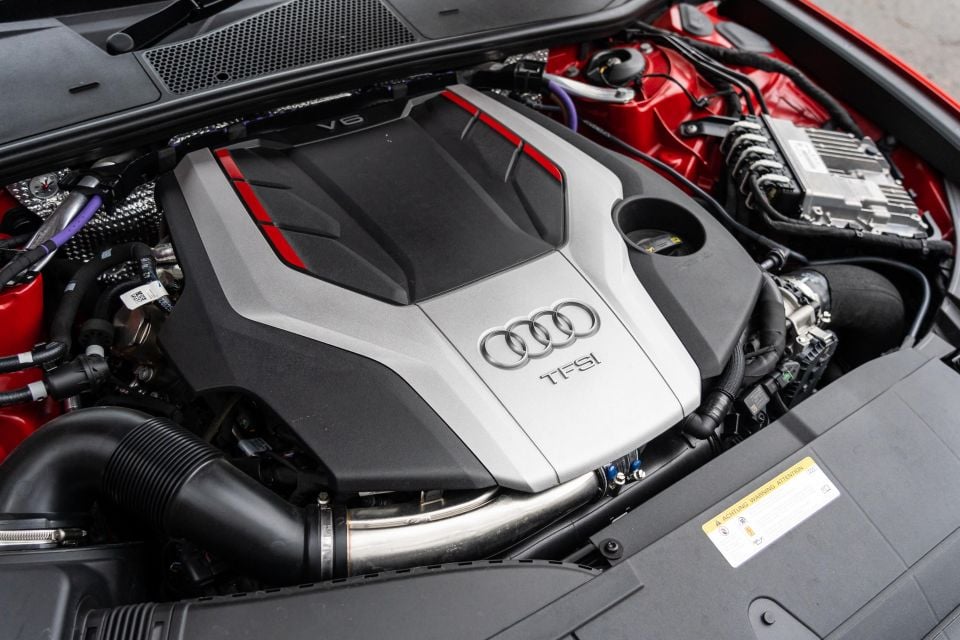
There’s plenty of trickery afoot to deliver such strong numbers from a smaller displacement, not least of which is the 48V mild-hybrid system.
Not only does it allow the engine to cut out while coasting and provide smoother start/stop in town, it drives an electrically-powered compressor – a form of e-turbo – to offer big boost from low engine speeds, when there’s not enough air flowing through the conventional turbocharger to operate effectively.
Audi debuted the tech in its first SQ7, but the S6 (and related S7) are the first petrol-powered cars to get it.
Power is put to all four wheels through an eight-speed torque converter automatic transmission. That’s right, no dual-clutch nonsense here.
| Test | Audi RS6 Avant | Audi S6 sedan |
|---|---|---|
| 0-100km/h (0-62mph) Start/stop active, comfort mode | 4.6 seconds | – |
| 0-100km/h (0-62mph) Launch control, dynamic mode | 3.6 seconds | 4.4 seconds |
| 1/4 mile | 11.7 seconds at 193.3km/h | 12.8 seconds at 177.2km/h |
| 100km/h (62mph) – 0km/h | 2.6 seconds at 34.2 metres | 2.6 seconds at 34.5 metres |
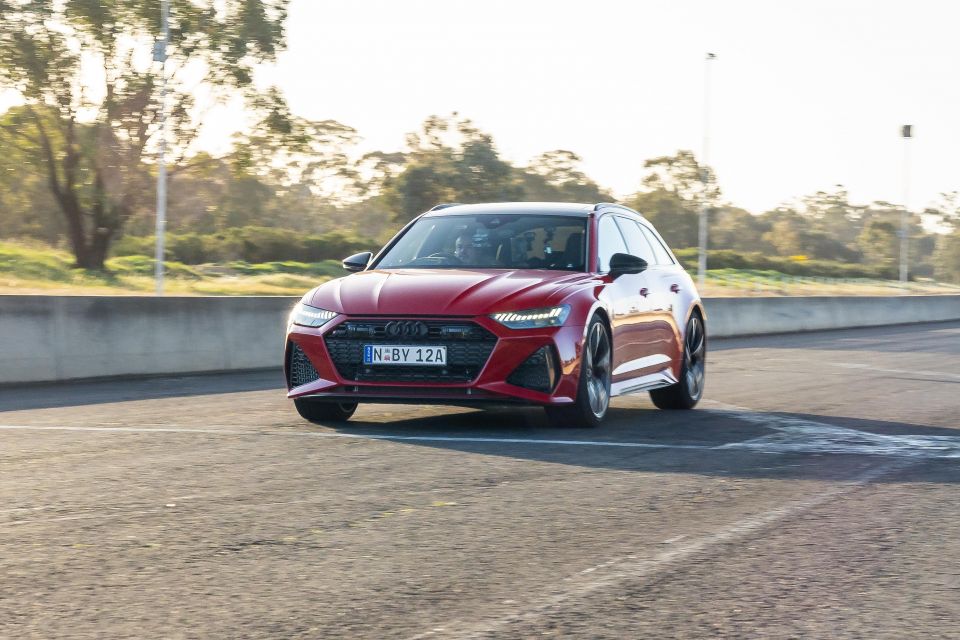
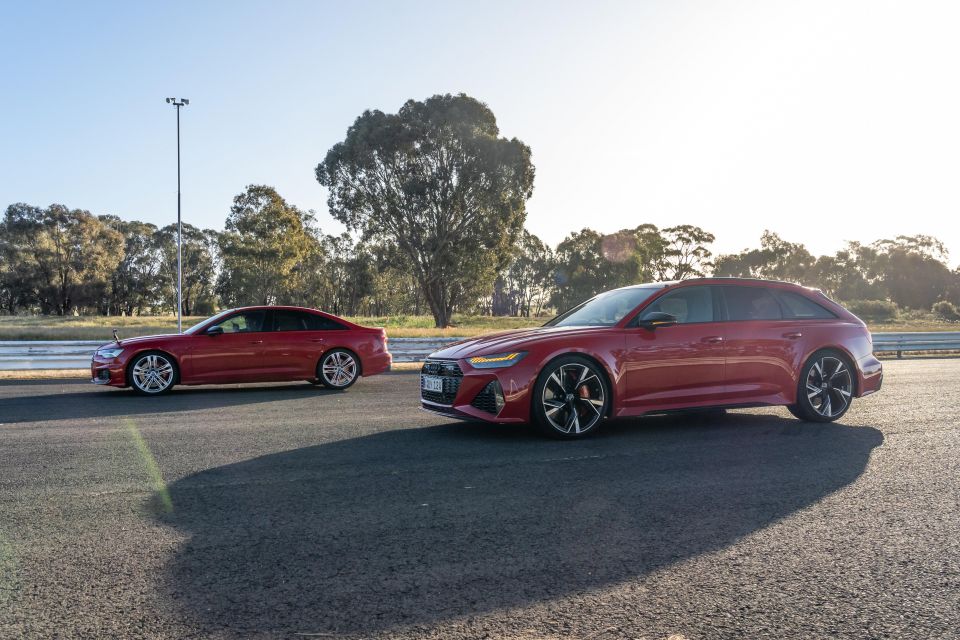
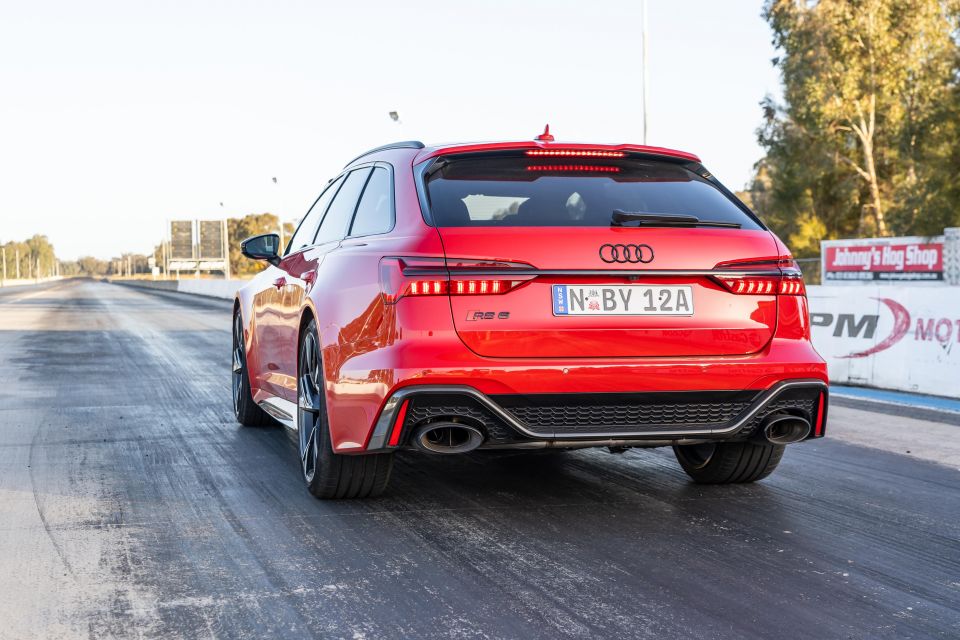
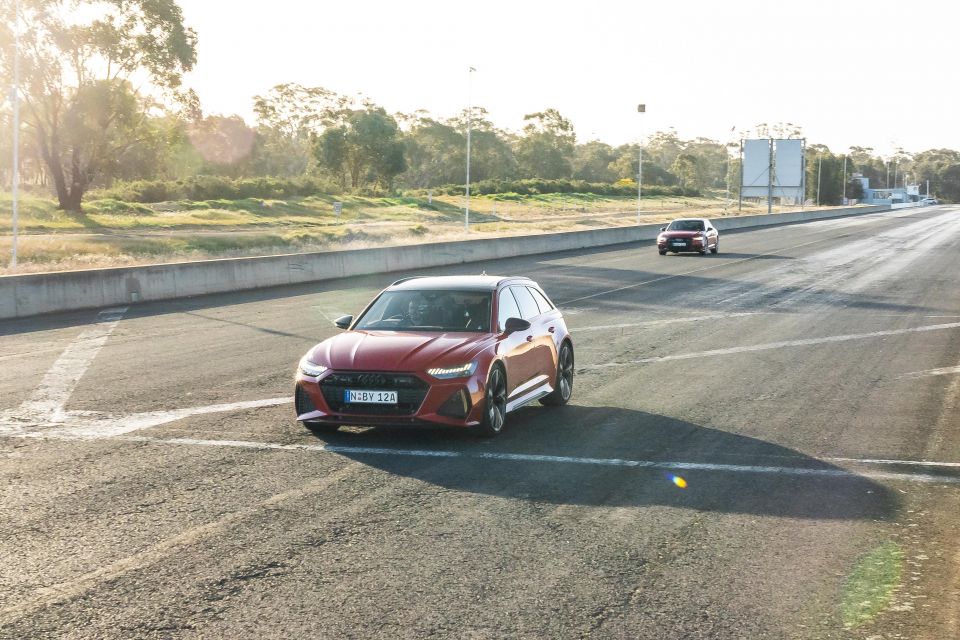
We always knew the RS6 would be the quicker of these two, but we were genuinely surprised with how fast the S6 is.
Many people have noted the outgoing RS6 Performance was more powerful and slightly quicker than the new RS6 across the quarter mile. It’s worth keeping in mind Audi has launched the new RS6 as a ‘base’ performance variant, and all-new RS6 Performance is likely to join the ranks in due course.
While there’s a big cost saving in choosing the S6, the RS6 is an all-rounder that kills it as a performance car as well. It’s about as quick as the S6 from 0-100km/h even with the stop/start system active and in comfort mode, which gives you an idea of the performance contained within.
MORE: Watch more CarExpert Dragparisons MORE: Audi RS6 Avant review MORE: Audi S6 sedan review
Share your thoughts with us in the comments below!
Paul Maric is a CarExpert co-founder and YouTube host, combining engineering expertise with two decades in automotive journalism.
Share your thoughts and write a review of a car you own and get featured on CarExpert.


Damion Smy
13 Hours Ago


Damion Smy
16 Hours Ago


Damion Smy
20 Hours Ago


Damion Smy
21 Hours Ago


Damion Smy
22 Hours Ago


Damion Smy
22 Hours Ago